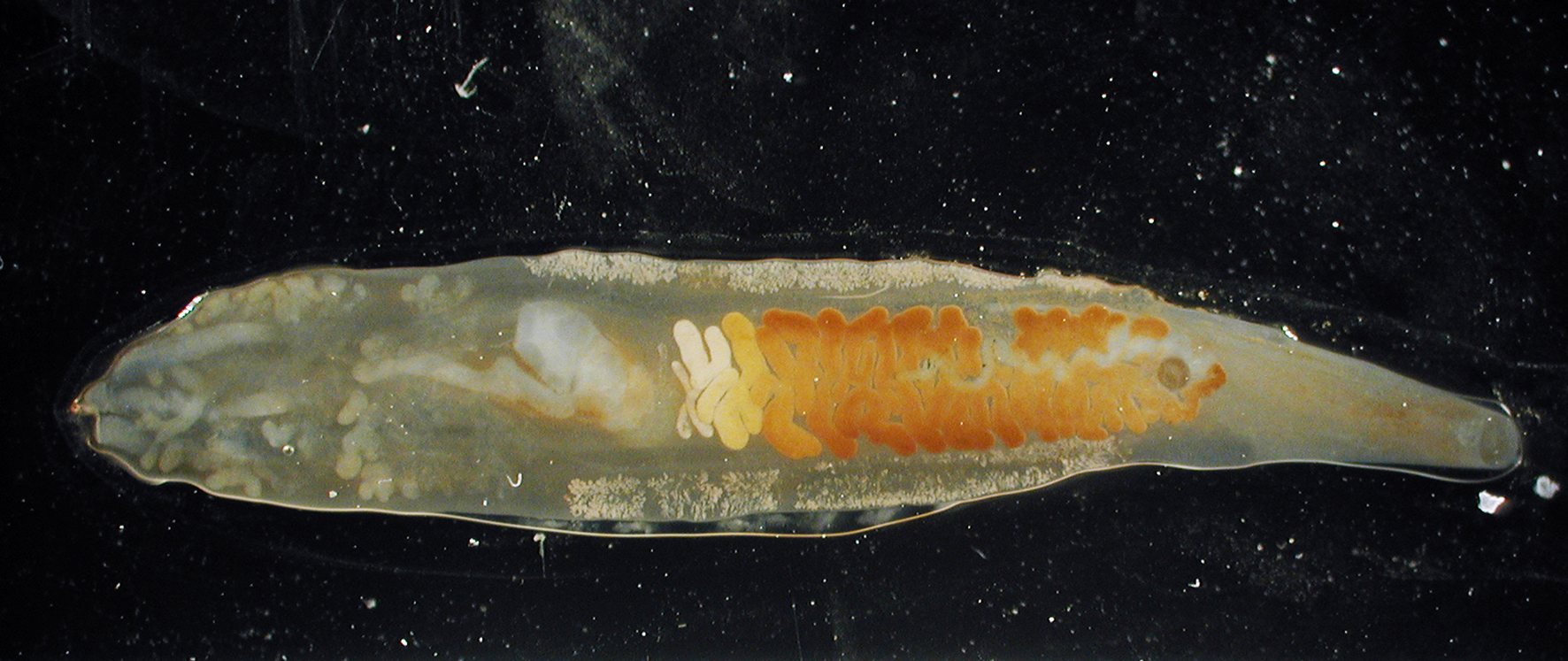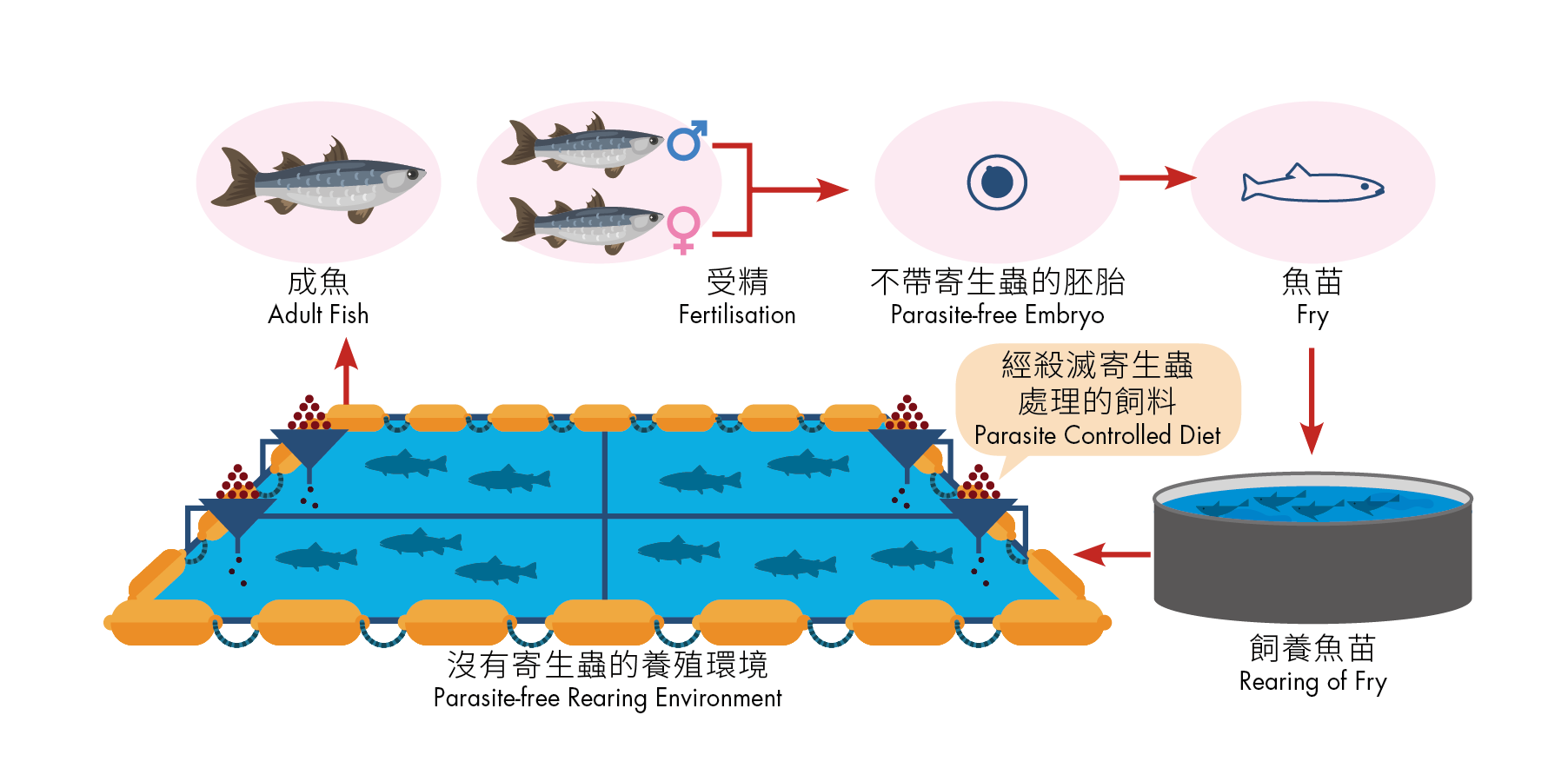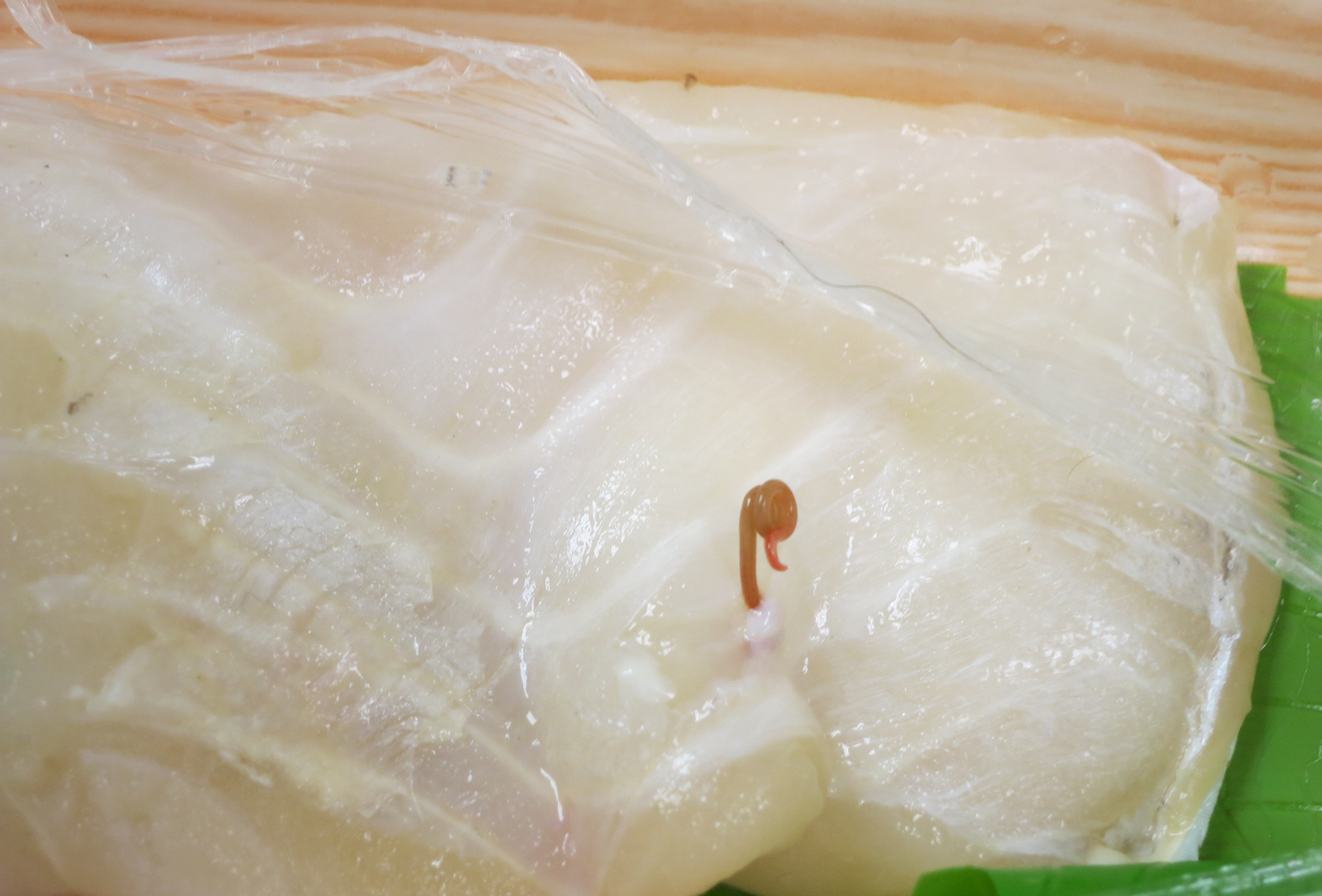
Food Safety Focus (148th Issue, November 2018) – Incident in Focus
Food Safety of Freshwater Fish Sashimi
Reported by Dr. Terence CHUNG, Fisheries Officer,
Veterinary Public Health Section, Centre for Food Safety
Background
Recently, there were discussions on whether rainbow trout (Scientific name Oncorhynchus mykiss) can be named “Salmon” as it belongs to the same scientific category of “salmonidae” fish, just like Atlantic salmon. Meanwhile, a local TV programme introduced the Carp Yu Sang dishes as a delicacy. These two incidents have given rise to public concern on the food safety of freshwater fish sashimi.
Fish Borne Parasite Can Infect Human
Fish borne parasites are common in both marine and freshwater fish. Some of these fish borne parasites can infect human, e.g. Nematodes and Trematodes. Anisakis is a common Nematode in some marine fish while the Chinese liver fluke (a Trematodes, Clonorchis sinensis) (Figure 1) is commonly associated with freshwater carp and related species. Chinese liver fluke is an endemic problem in Southeast and East Asia. A recent paper estimated some 15 million people are infected with Chinese liver fluke in East Asia, of which 13 million are in China*.

Clonorchis sinensis under microscope.
(Source: Dr. Samson SY. WONG, Assistant Professor (Clinical), Department of Microbiology, HKU)
Fish borne parasites have complex life cycles, involving multiple intermediate hosts. Unfortunately, some commercially important fish, e.g. carp, are intermediate hosts to these parasites. During rearing these fish, they may acquire eggs or cysts of the parasites through the contaminated environment or the feed they ingested. People will be infected when consuming raw or undercooked fish containing the parasites.
 Good aquaculture practice can reduce the risk of parasite infestation.
Good aquaculture practice can reduce the risk of parasite infestation.
Good Aquaculture Practice Can Greatly Reduce the Risk of Parasite Infection
Some European countries such as Norway have developed special aquaculture practices to control parasite infestation in farmed fish (Figure 2). It has been accepted by the European Union that farmed fish cultured from embryo, fed with parasite-controlled diet (e.g. feed that has been heat-treated), and reared in parasite-free environment have a much lower risk of parasite infection. Nevertheless, these fishery products must still be inspected regularly for presence of parasites that somehow get their way to the farmed fish. However, fish such as carp cultured in Southeast Asia are not traditionally cultured in such controlled environment.

A photo taken from a food complaint case of a suspected parasite found in raw fish.
Killing Parasites in Fish by Freezing
To deal with parasites in fish, the European Union and the Food and Drug Administration (FDA) of USA require fishery products intended to be consumed raw to go through freezing treatment to reduce the risk of parasite infection. For example, fish intended for raw consumption should be frozen at –20°C or below for seven days or at –35°C for about 20 hours before sale. Only fish products produced from properly controlled environment are exempted.
To summarise, choose the way to eat fishery products wisely. If the fish, regardless of marine or freshwater, is not raised in controlled environment or the product is not treated properly, it may carry parasites (Figure 3). There is a risk of getting parasite infection from consuming raw fishery products.
Key Points to Note:
- Both marine and freshwater fish may carry a variety of parasites.
- There is inherent microbiological risk consuming raw fish.
- Good aquaculture practice and freezing treatment can greatly reduce the risk of parasite infection.
Advice to the Trade
- Obtain an official health certificate issued by the country of origin from importers. Only source from reliable suppliers that farm their fish in controlled aquaculture environment and process their products properly (e.g. freezing treatment) for raw consumption.
- Obtain a relevant licence/permit from the Food and Environmental Hygiene Department for manufacturing and/or sale of sushi and sashimi.
- Do not serve Chinese dishes “Yu Sang”.
Advice to the Public
- Purchase fish from reliable and licensed premises.
- Susceptible populations, including the elderly, young children, pregnant women and people with weakened immune systems are advised not to consume raw fish.
- The best way to avoid fish-borne zoonotic parasite infection is to cook fishery products properly.
*MB Qian, J Utzinger, J Keiser and XN Zhou., 2016. Clonorchiasis. Lancet 387:800-10.

